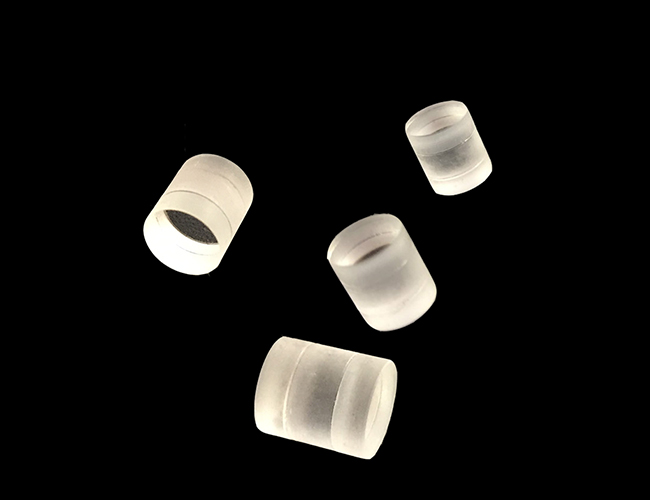ISO9001 Certified Professional Manufacturer & Supplier of Optics
+86-0431-87911611 admin@ytoptics.com
Contact us
-
 Email: admin@ytoptics.com
Email: admin@ytoptics.com
-
 Tel:86-0431-87911611
Tel:86-0431-87911611
-
 Add: 2# Automotive Innovation
Add: 2# Automotive Innovation
Jilin Province, China
Changchun Yutai Optics Co., Ltd.
Home > Products > Lenses > Triplet Lenses

CaF2 / Fused Silica / CaF2 Triplet Lenses
Triplet achromatic lenses offer excellent performance in chromatic and aberration correction and are suitable for high precision optical systems, but have higher cost, weight and assembly complexity. The choice needs to be weighed against the specific needs of the application.
Share this:
Triplet achromatic lenses made of fused silica(SiO2) and calcium
fluoride(CaF2) materials are used to correct chromatic aberration mainly
through the different dispersion characteristics of these two
materials.
Fused Silica (SiO2):
Abbe number: High (about 67.8), a low dispersion material.
Refractive index: moderate (about 1.46 in the visible range).
Transparent range: good from ultraviolet to near infrared.
Calcium Fluoride (CaF2):
Abbe number: low (about 95.3), a high dispersion material.
Refractive index: low (about 1.43 in the visible range).
Transparent range: from UV to IR, especially excellent in the UV region.
What are the advantages of triplet achromatic lenses made of CaF2 and fused silica?
Wide band transmission: fused silica and CaF2 have good light transmission in the UV to IR bands, suitable for wide spectrum applications.
High chromatic aberration correction ability: the dispersion characteristics of the two materials are very different, which can effectively correct chromatic aberration.
Thermal stability: fused silica and CaF2 have low coefficient of thermal expansion and are suitable for environments with large temperature changes.
What are the applications of triplet achromatic lenses in CaF₂ and fused silica materials?
UV optical systems: such as UV microscopes and UV laser systems.
High precision optical instruments: such as astronomical telescopes and high resolution camera lenses.
Highly Recommended Optical Lenses from Yutai Optics:
UV Fused Silica Lenses
Optical Doublet Lenses
Plano Convex(PCX) Lenses
N-BASF64 / N-BK7 / N-BASF64 Triplet Lenses
Fused Silica (SiO2):
Abbe number: High (about 67.8), a low dispersion material.
Refractive index: moderate (about 1.46 in the visible range).
Transparent range: good from ultraviolet to near infrared.
Calcium Fluoride (CaF2):
Abbe number: low (about 95.3), a high dispersion material.
Refractive index: low (about 1.43 in the visible range).
Transparent range: from UV to IR, especially excellent in the UV region.
What are the advantages of triplet achromatic lenses made of CaF2 and fused silica?
Wide band transmission: fused silica and CaF2 have good light transmission in the UV to IR bands, suitable for wide spectrum applications.
High chromatic aberration correction ability: the dispersion characteristics of the two materials are very different, which can effectively correct chromatic aberration.
Thermal stability: fused silica and CaF2 have low coefficient of thermal expansion and are suitable for environments with large temperature changes.
What are the applications of triplet achromatic lenses in CaF₂ and fused silica materials?
UV optical systems: such as UV microscopes and UV laser systems.
High precision optical instruments: such as astronomical telescopes and high resolution camera lenses.
Highly Recommended Optical Lenses from Yutai Optics:
UV Fused Silica Lenses
Optical Doublet Lenses
Plano Convex(PCX) Lenses
N-BASF64 / N-BK7 / N-BASF64 Triplet Lenses

TALK TO US 86-0431-87911611
86-0431-87911611
Call us now!
 86-0431-87911611
86-0431-87911611Call us now!
ONLINE CHAT
 2433808388
2433808388

